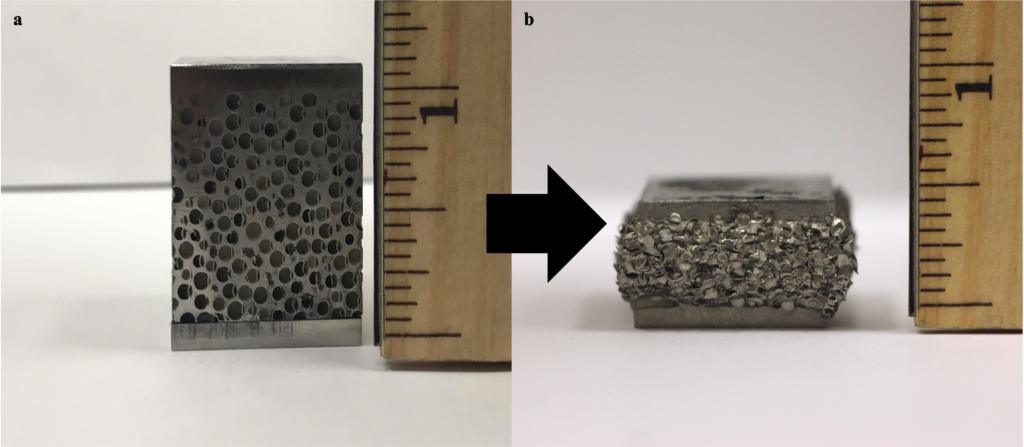Composite Metal Foam Sandwich Panels

Image of composite metal foam core sandwich panel (a) as manufactured and (b) strained to 60% under compression. Image credit: First published in Proceedings of the 11th International Conference on Porous Metals and Metallic Foams, “Study on the Mechanical Properties of Composite Metal Foam Core Sandwich Panels.”
Microstructural and Mechanical Characterization of CMF Sandwich Panels
The use of metal foams in various applications can be limited by their strength under tension and vulnerability to corrosion due to their large surface area. The porosities in metal foams hinder their tensile strength and allow for rapid crack growth through the structure. Metal foams can be manufactured in a variety of ways in order to maximize their strength to density ratio. Currently, most metal foams are made with varying cell size and inhomogeneities within the structure that result in less than desirable mechanical properties for structural applications. However, metal foams are optimal materials for use as a sandwich panel core as they provide a relatively high strength with a low density. The porosities in the core can be an important feature for a variety of engineering and structural applications that offer improved thermal, radiation, and acoustic shielding. CMF’s strength to weight ratio, unique impact energy absorption capabilities, and passive thermal insulating properties make CMF a leading candidate for sandwich panel structures. The metallic matrix between the hollow spheres creates a larger surface area to adhere face sheets to CMF’s surface compared to other metal foams for sandwich panel manufacturing. Although sandwich panels are generally used to improve the flexural strength of the core, it is also important to characterize these materials under various loading scenarios. The face sheets can help support CMF under tensile forces and improve the material’s corrosion resistance for a variety of engineering and structural applications.